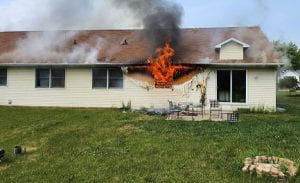By Jay Canzonier, Housing Management Specialist, Cornell Ag Workforce Development
June 21st marks the first day of summer and longest day of the year. A glorious day and evening for barbeques and corn hole tournaments…unless you are working the night shift. Our co-workers who brave the dark during their workday have a much different outlook on the sunlight looking in while they try to sleep.
In the darkness of evening and as you enter sleep, your body produces melatonin, a naturally occurring hormone which regulates your body’s circadian rhythms, your natural sleep-wake cycle. By morning light your body begins to suppress melatonin by elevating levels of cortisol, a steroid hormone which plays a significant role in waking up. Exposure to light helps your body figure out when it’s time to sleep, and time to wake up. Light, whether it be natural sunlight or artificial, disrupts the creation of melatonin. This disruption cues your internal body clock to be awake and active, making it difficult to enter a restful sleep.
Most adults require seven to nine hours of sleep daily. A lack of sleep can lead to decreased energy, delayed reaction times, increased anxiety, inability to process information quickly, and many more side effects that decrease productivity at work and overall quality of life. Long term sleep deprivation can contribute to more severe chronic health risks including anxiety, coronary heart disease, depression, obesity, stroke, and Type 2 diabetes just to name a few. Inadequate sleep can be a key contributor in work related accidents.
Working the night shift causes your body to get out of its natural sleeping rhythms by requiring you to be alert when the light cycle programs it to be sleeping. Conversely, when you go home after a night shift, your internal body clock and exposure to daylight tells your body to be awake and active. There are sleep hygiene tactics that can be used to help your body minimize the effects of an opposite sleep schedule resulting from night duty. Tools to make your sleep time more pleasant and productive include:
- Wear dark sunglasses to suppress light when leaving the workplace in the morning. Even if it is a short exposure, minimizing the effect of sunlight on your body can have an impact on how quickly you enter a restful sleep, and how long you sleep.
- Use blackout curtains in sleeping rooms to eliminate sunlight during the sleep time. Blackout curtains are fabric drapes or shades that cover the window completely, eliminating all light from entering the sleeping area. Note that these will be labeled differently from other drapes and shades which may be only “light filtering.” Blackout curtains help create a dark environment that mimics nighttime, your body will produce melatonin and lead to a longer and more refreshing quality of sleep.
- Eliminate sources of “blue light” from electronic devises within the sleeping area. Blue light decreases the production of melatonin, making sleep incredibly difficult particularly when working the night shift.
- When possible, align work shifts with sleeping shifts in employee housing. Doing so can minimize daytime disturbances in the sleeping area and accommodate the sleeping needs and preferences of the night shift workers.
These strategies are affordable and simple ways to improve sleep quality, overall health, safety, and productivity. Maintaining your body’s natural circadian rhythm is an essential building block in overall health and quality of life. By sharing this information with our night shift workers and providing them with the necessary tools, we can help those who work while we sleep…sleep while we work.
This link is to an informative website and short video on the importance of sleep and how it affects performance. Dr. James B. Maas was a professor at Cornell University for more than 48 years and is famous for coining the term “power nap.”
_________________________________________________________________________________
By Jay Canzonier, Cornell University. Permission granted to repost, quote, and reprint with author attribution.
The post Help Farm Employees “Sleep for Success!” appeared in The Ag Workforce Journal



 You can greatly reduce risk by breaking fire safety into these five integral parts:
You can greatly reduce risk by breaking fire safety into these five integral parts: